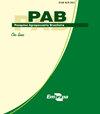植物生长调节剂作用下弯曲肠愈伤组织胰蛋白酶抑制剂的研究
IF 0.7
4区 农林科学
Q3 AGRICULTURE, MULTIDISCIPLINARY
引用次数: 0
摘要
摘要本研究旨在研究植物生长调节剂(plant growth regulators, PGR)对离体培养的弯曲肠(Enterolobium concortisiliquum)子叶愈伤组织诱导的影响,并评价其对胰蛋白酶的抑制作用。在添加了二氯苯氧乙酸(2,4- d)、picloram (PIC)、kinetin (KIN)和6-苄基氨基嘌呤(BAP)的培养基中,培养concontisiliquum子叶。60 d后测定愈伤组织质量、胰蛋白酶抑制活性、形态发生和细胞化学观察以及生物活性。帕累托图显示,只有0.5 mg L-1 PIC影响鲜质量的增加,而0.5 mg L-1 BAP影响干质量的增加。主成分分析图显示形成了两个清晰的簇。在0.5 mg L-1 2,4- d + 2.0 mg L-1 PIC + 0.5 mg L-1 KIN + 2.0 mg L-1 BAP的处理下,胰蛋白酶的抑制活性达到更高的强度。不同速率的PGR组合导致强烈的愈伤组织形成。低浓度的PGR导致较高的新鲜质量、干质量和生物活性。利用PGR可获得对胰蛋白酶具有良好抑制活性的愈伤组织。本文章由计算机程序翻译,如有差异,请以英文原文为准。
Trypsin inhibitor in Enterolobium contortisiliquum calli grown in the presence of plant growth regulators
Abstract The objective of this work was to investigate the effect of plant growth regulators (PGR) on the induction of calli from cotyledons of Enterolobium contortisiliquum grown in vitro, as well as to evaluate the inhibitory activity of trypsin in these calli. Cotyledons of E. contortisiliquum were cultivated in culture medium supplemented with dichlorophenoxyacetic acid (2,4-D), picloram (PIC), kinetin (KIN), and 6-benzylaminopurine (BAP). Callus mass, inhibitory activity of trypsin, morphogenetic and cytochemical observations, and biological activity were measured after 60 days. The Pareto diagram showed that only 0.5 mg L-1 PIC influenced the increase of fresh mass, whereas 0.5 mg L-1 BAP influenced dry mass. The principal component analysis plot showed the formation of two clear clusters. The inhibitory activity of trypsin is achieved at a higher intensity in the treatment with 0.5 mg L-1 2,4-D + 2.0 mg L-1 PIC + 0.5 mg L-1 KIN + 2.0 mg L-1 BAP. The combination of PGR at different rates causes an intense callus formation. Low concentrations of PGR result in a higher fresh mass, dry mass, and biological activity. The use of PGR is efficient in obtaining E. contortisiliquum calli with a satisfactory inhibitory activity of trypsin.
求助全文
通过发布文献求助,成功后即可免费获取论文全文。
去求助
来源期刊

Pesquisa Agropecuaria Brasileira
农林科学-农业综合
CiteScore
1.20
自引率
0.00%
发文量
45
审稿时长
9-18 weeks
期刊介绍:
Pesquisa Agropecuária Brasileira – PAB – is issued monthly by Empresa Brasileira de Pesquisa Agropecuária – EMBRAPA, affiliated to Ministry of Agriculture, Livestock and Food Supply. PAB publishes original scientific-technological articles on Plant Physiology, Plant Pathology, Crop Science, Genetics, Soil Science, Food Technology and Animal Science.
Its abbreviated title is Pesq. agropec. bras., and it should be used in bibliographies, footnotes, references and bibliographic strips.
 求助内容:
求助内容: 应助结果提醒方式:
应助结果提醒方式:


